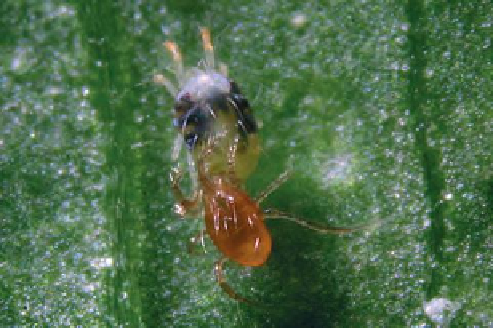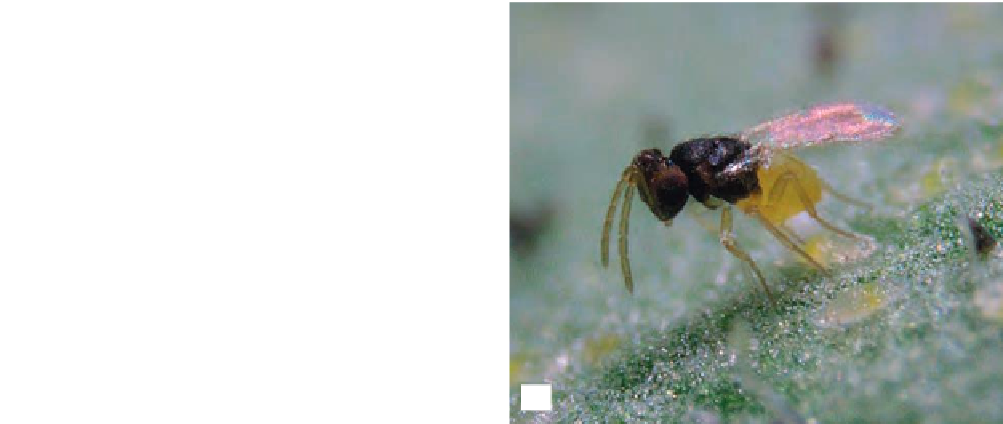Agriculture Reference
In-Depth Information
(a)
Figure 16.10
(a)
Phytoseiulus
eating a two-spotted
mite; (b)
Encarsia
wasp laying an egg into a whitefl y
'scale' (courtesy of Bioline Ltd)
(b)
necessary for application to the crop area in
question
X
Mixing the two, avoiding spillage on to skin,
clothing and the surrounding area.
X
Applying the product so that the same area is not
covered more than once, at any one time.
X
Applying the product under suitable dry, wind-free
weather conditions.
X
Applying the product so that other humans,
benefi cial animals, waterways and adjacent
plantings are avoided.
X
Avoiding spray drift, especially with herbicides.
X
Carefully storing the pesticides in a secure, safe,
dry place away from children and pets.
Other information on
safety and environmental
impact
and on
natural balances
is given separately
below in each of the four main sections: on herbicides
(p. 201), molluscicides (p. 202), insecticides (p. 203)
and fungicides (p. 214).
Safe practice and environmental impact of herbicidal
control: in most garden situations, the almost
complete removal of weeds such as those described
in Chapter 17 is considered a useful or necessary
activity.
X
Care needs to be taken when mixing and applying
herbicides. A concentrated active ingredient in
the trade product represents a particular risk if
adequate protective clothing is not worn. Products
for gardeners are chosen for their low level of
toxicity but gardeners still need to be careful.
Natural balances:
X
Some weeds are important in maintaining butterfl y
species. For example, the leaves of
stinging
nettle
(
Urtica dioica
) are the main food source for
caterpillars of the comma, peacock, red admiral
and painted lady butterfl ies, some of Britain and
Ireland's most beautiful insects (Figure 16.11).
Removal of all nettle plants in an area is likely to
reduce these insects.
X
Care needs to be taken when spraying herbicides
near ponds.
Glyphosate
, for example, is toxic to
fi sh, especially when water temperatures are high.
X
Some herbicides may have some toxicity to
benefi cial insects (e.g.
clopyralid
lawn weedkiller
on ladybirds).
X
Careless spraying of the wrong herbicides may
cause damage or death of desirable plants. For
example,
glyphosate
, a total weedkiller, sprayed
on a lawn, will completely kill off the grass.
X
Even the vapour of a herbicide may be damaging.
For example, extremely small amounts of lawn
herbicide containing
2,4-D
can spoil the growth
of tomato plants and prevent fruiting. The vapour
originating from a container of concentrate
containing 2,4-D thoughtlessly stored inside a
16
The word '
pesticide
' is used here to cover all
crop protection chemicals, including herbicides
(for weeds), molluscicides (for slugs and snails),
insecticides (for insects), acaricides (for mites),
nematicides (for nematodes) and fungicides (for
fungi).
Each container of pesticide available for garden use
contains several ingredients. The
active ingredient's
role is to kill the weed, pest or disease. The other
constituents help in the product's storage.
Herbicides (weedkillers)
Benefits and limitations of herbicidal control: see
general points for 'chemical control' on p. 199.




